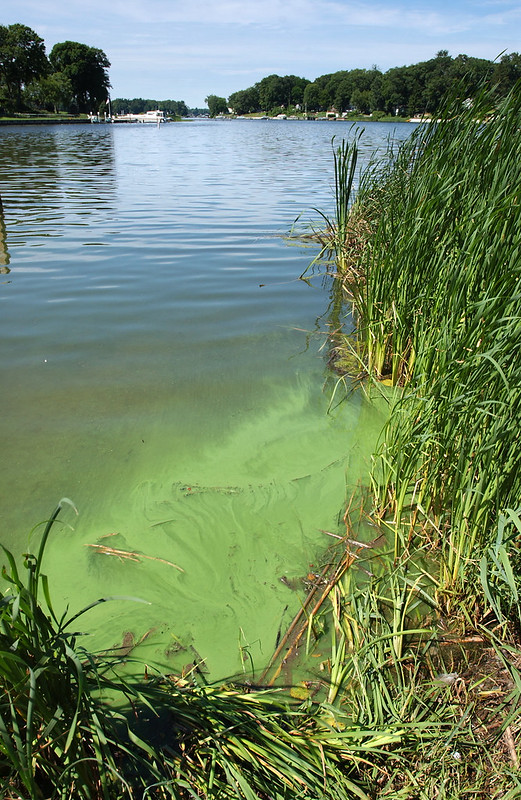What is this green goo? Recognizing it may help keep pets and people safe
Online webinar helps explain what harmful algal blooms are and how to recognize them.

Algal blooms occur when tiny, naturally occurring plants grow rapidly in an area of water and are visible without a microscope. The lake water may look green (or other colors, like purple) or have scum floating on the top of it. Not all algal blooms are toxic but some are. Algal blooms that produce toxins that could be dangerous to humans or animals are considered Harmful Algal Blooms (HABs). Reports of HABs have been increasing in Michigan since 2013 and include both inland lakes as well as the Great Lakes. An online map shows 2023 reports and confirmed inland lake blooms. Western Lake Erie and Saginaw Bay, as well as Lake Superior, have also had confirmed HABs.

Harmful Algal Blooms can have a variety of health impacts for people including skin rashes, a runny nose or stomach pain and headaches. If you suspect that a harmful algal bloom is present, do not allow pets or livestock to drink or swim in the water. Pets tend to swallow more water than people and may take in more toxins becoming seriously ill or die.
Michigan Sea Grant and partners around the state hosted a free online HABs webinar that included talks on what harmful algal blooms are, the role of algae in the ecosystem, information about how to respond if a potential HAB is observed and how to prevent and reduce the likelihood of HAB occurrence. Listen in to bust some myths, get tips for keeping your family and pets safe, and learn how you can take action to support healthy water quality on your property and in your community. The target audience for this webinar is people impacted by harmful algal blooms in the Great Lakes or inland waters or anyone who wants to learn more about this topic. Watch the webinar online at the Michigan Sea Grant YouTube site. A resources and frequently asked questions and other HABs information resources are available online.
Michigan Sea Grant helps to foster economic growth and protect Michigan’s coastal, Great Lakes resources through education, research and outreach. A collaborative effort of the University of Michigan and Michigan State University and its MSU Extension, Michigan Sea Grant is part of the NOAA-National Sea Grant network of 34 university-based programs.
This article was prepared by Michigan Sea Grant under award NA22OAR4170084 from the National Oceanic and Atmospheric Administration, U.S. Department of Commerce through the Regents of the University of Michigan. The statement, findings, conclusions, and recommendations are those of the author(s) and do not necessarily reflect the views of the National Oceanic and Atmospheric Administration, the Department of Commerce, or the Regents of the University of Michigan.



 Print
Print Email
Email